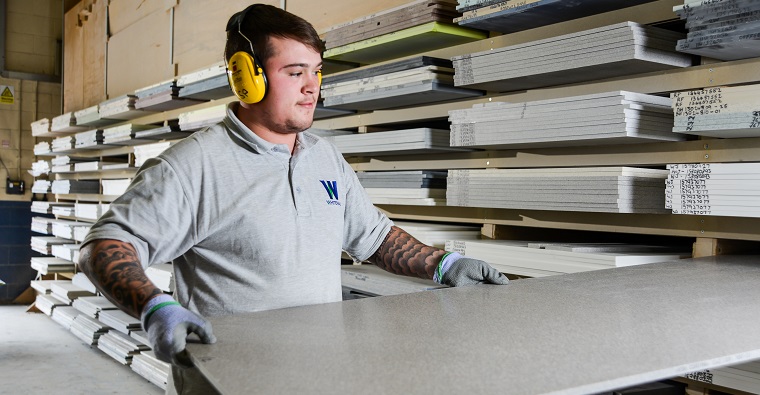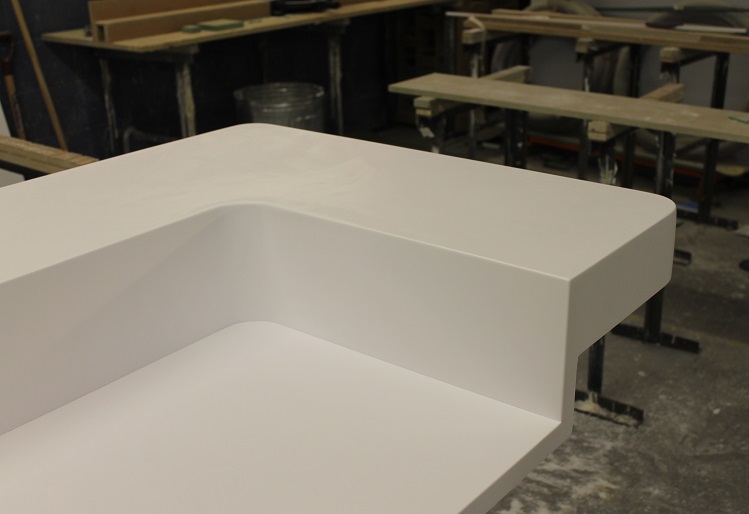
Solid surface fabrication hacks – in action
Posted by Whitehall on 26th JunSolid surface fabrication is a multi-step process that requires specialist knowledge at each stage. At Whitehall, every completed work surface has passed through the hands of several different engineers, each armed with the techniques required to get the design spot on.
These techniques – or ‘hacks’ – speed up our lead times and, more importantly, ensure the work surfaces we produce are always of the highest standard. They’re also the reason brands like Du Pont and LG Hausys trust us as quality network members.
While it’s one thing to tell you about the level of engineering that goes into the surfaces we produce, it’s probably more effective to show you… Take a look at these solid surface fabrication hacks, which we recently filmed and photographed at our Leeds workshop.
HACK #1
Sanding off every edge
It’s a given that we sand and polish all of the visible edges of a work surface to finish it properly. But we also extend this treatment to internal edges.
Cutting synthetic materials, like Corian, exposes raw fibres which, left untreated, could catch and cause small fractures. This sanding process helps to reinforce the overall strength of the work surface, creating a clean, smooth edge for appliances like sinks and hobs to slot into.
HACK #2
Thermoforming curved corners
There’s no cutting corners when it comes to fabricating solid surfaces. Instead, we bend them.
Thermoforming is the process of heating segments of solid surface before shaping and setting them into position, creating smooth bends and sweeping corners with ease. This process enables us to maintain the strength of the material while achieving unique shapes.
HACK #3
Mechanical precision cutting
Our CNC cutting machine is programmed to cut, score and scribe surface materials down to the most precise millimetre. This gives us a huge advantage when it comes to templating work surfaces accurately first time around. There’s no room for human error and it shaves days off the fabrication process by bypassing the need for time-consuming manual cutting.

HACK #4
Reinforced corners
Corners are the weakest point of any solid surface and therefore the most likely area to crack under pressure. To reduce the risk of this happening, we reinforce all of our corners to double thickness, creating durable, hardwearing points that easily support appliances.

HACK #5
Concealed joins
To create the seamless joins synonymous with solid surface fabrication, we start by fixing the edges with a material-matched synthetic glue. Once the glue has set and hardened, we then sand and polish over the join so it’s undetectable to the naked eye.
We hope this has given you a useful glimpse into the complex world of surface fabrication, but we’d be happy to answer any questions you may have in the meantime. Perhaps there’s a particular hack we haven’t covered that you’d like us to focus on? Let us know by emailing us at info@whitehall-uk.com.
Alternatively, if you’d like to talk to us about an upcoming kitchen or bathroom design projects, please get in touch or send us your plans.
Back to blog


